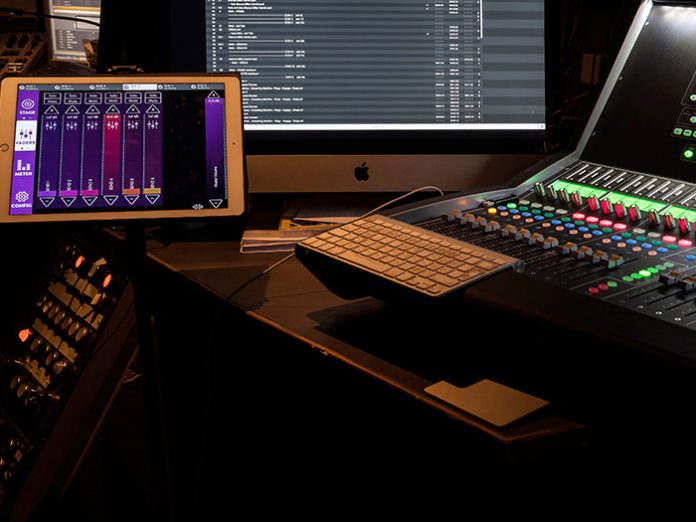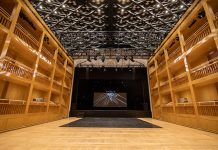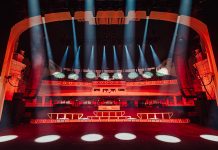Located in the city of Borås, 60 km East of Göteborg, the Borås Stadsteater is a municipality-owned theatre. Founded in 1964, it moved to its current building in 1975. A typical 1970s-style provincial venue, the theatre features a 500-capacity main auditorium with raked seating and a balcony. The main focus is conventional theatre, for the most part reinforced by lavalier microphones, but the theatre also hosts musical productions and occasional concerts. The programme of events includes both in-house productions and visiting acts.
By 2016 the ageing PA system had become too small and outdated to meet the demands of modern audiences, so the management team worked with the local authority to find a solution. An Alcons LR7 system was installed, along with a new Allen & Heath dLive digital mixing system.
Borås Stadsteater’s head of sound, Tobias Walka, explained the choice of in-ear for monitoring, “Since the need for in-ear mixing was becoming more and more prominent, we started looking at solutions that would fit our resources. For the most part, sound engineering for our productions is a one man gig. It’s very seldom we have the personnel to do a separate monitor mix, which we feel is a must when it comes to IEM, so we turned to personal monitoring. We looked at the integrated solutions within the digital mixing system and after a bit of research we came across the KLANG system, distributed in Sweden by Electrosound, and instantly felt that this was the solution we wanted.”
“Apart from our friends at Electrosound talking very enthusiastically about the system, there was a lot of buzz around the KLANG solution online so we downloaded the demo KLANG:app and were instantly hooked,” said Walka.
“Our mixing system was already fitted with Dante, so we used that to connect to our KLANG:fabrik unit,” continued Walka. “Apart from the curve of learning Dante, the setup was very simple. The KLANG:app is very intuitive and easy to navigate, especially when used on a larger iPad or Mac/PC. We hooked it up, patched it, assigned channels to users, added names etc. – and it all worked on the first try. The KLANG outputs are connected to six Sennheiser EW300 Wireless IEM’s and we premiered the system on our production of the musical Cabaret, using IEMs for the four-piece band and the two lead actors.”
Walka received an enthusiastic response from the band, “Most of the band members were familiar with working with IEMs, but all were extremely impressed with both the sound quality and the ease of use of the KLANG system. They all loved being able to adjust their levels on the fly during the gig. Since the band was seated during the whole show they loved the 3D aspect of the mixer as they could each place the sound of the other instruments where the person playing the instrument was physically situated. They all felt that it also helped greatly with both separation and clarity. The band commented that this was the first time in-ears has truly worked for them. In the past they felt IEM was a necessary evil, but with KLANG 3D IEM they loved it.”
The two lead actors both had their first experience with IEM on Cabaret and Walka felt that by controlling their own mix via the KLANG:app, they had an easier time adapting to the sonic landscape that is singing with in-ears.
Walka concluded, “For me as a sound engineer, the KLANG system was a life-saver. Set and forget. I listened in on the systems from time to time, for example when musicians wanted EQ adjustments, but other than that I could leave it up to the people using it and concentrate on doing the house mix. The ‘engineer mode’ was really simple to understand and use, so no worries there either. I would say that with outstanding sound quality, ease of use and improved working conditions for all involved, KLANG 3D IEM is a big win-win for us.”





